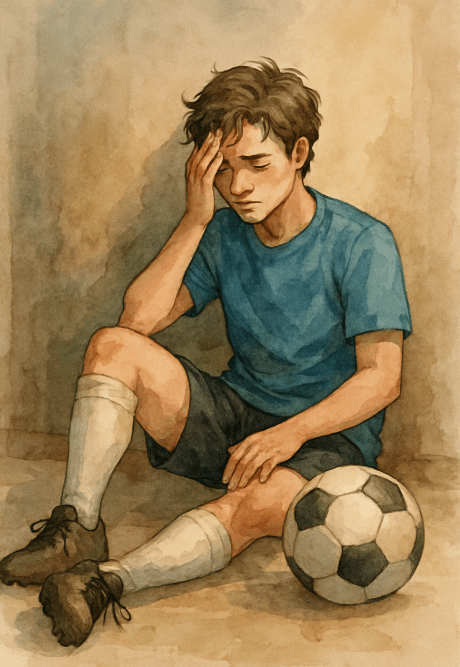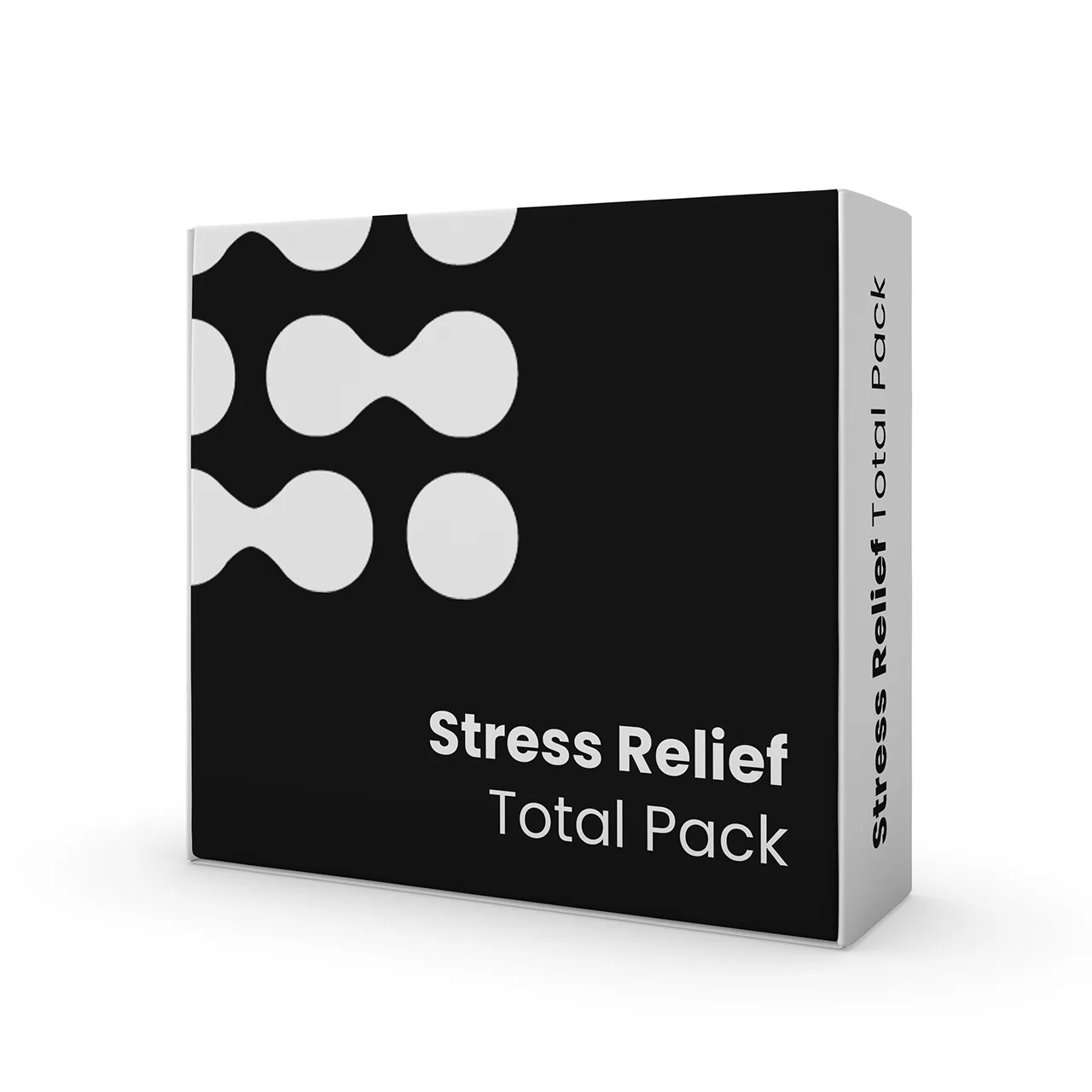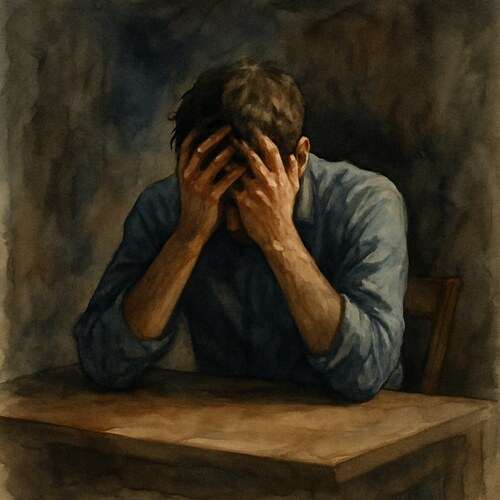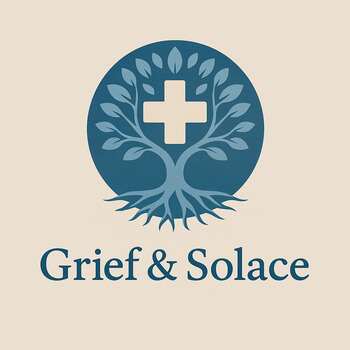Grieving Frontal Lobe Injury: Mourning the Changes No One Can See
Grief with frontal lobe injury is invisible at first, until you realize the person you love has changed in ways words can’t fully explain.

This post blends real grief with grounded knowledge. It isn’t clinical. It isn’t distant. It’s meant to sit beside you—not above you. The story you’ll read is meant to reflect what so many feel when living through or witnessing this condition: confusion, exhaustion, and quiet forms of courage.
If what you read feels familiar, please speak with your doctor. Your pain deserves more than silence.
He Came Back to Me, but Not as the Man I Knew
It began on a Tuesday. I remember it vividly because he was supposed to pick up the groceries, yet he forgot. He never forgets. That’s the kind of man he is…was…always two steps ahead, always with a checklist in hand. But that day? He returned home with a dazed look and a bruise on his shoulder. He said he “lost time.” At that moment, I had no idea what he meant. Now, I understand all too well.
I’ve seen what it looks like when the lights are on, but nobody’s home. I’ve heard the sounds my husband makes…guttural, sharp, wrong, noises that I never knew could come from him. I’ve felt the weight of his body as I catch him before he collapses onto the dresser, praying he doesn’t break something else. I’ve learned far too much about seizures, yet I still don’t know who I’m waking up to afterward.
🧠 Symptoms:
- Frontal lobe seizures are typically short—lasting under 30 seconds—and often occur during sleep, which can cause them to be mistaken for sleep disorders or psychiatric conditions. Symptoms include:
- Sudden head and eye movement to one side
- Lack of response or difficulty speaking
- Explosive vocal outbursts, including screams, laughter, or profanity
- Unusual postures (e.g., one arm extended, one flexed like a fencing pose)
- Repetitive motor actions like pelvic thrusting, rocking, or bicycling motions
The doctors told us it was the frontal lobe, that it was “brief,” that it would “pass,” and that it wasn’t the kind of epilepsy people worry about.
But I do worry. Every single night. Each time he twitches in his sleep. Whenever he walks too close to the stairs. Every time he stops mid-sentence, his eyes go flat as if the screen has frozen.
He used to be a coach, pacing the sidelines like a storm ready to unleash. Now, he sits in silence, afraid to move too quickly, because the last time he did, he threw a chair and couldn’t recall it afterward. He apologized for weeks, crying in the bathroom, thinking I couldn’t hear him.
No one talks about those seizures, the ones that appear violent, the ones that make others uncomfortable. The ones that get misdiagnosed as rage or psychosis. The ones that turn a familiar body into that of a stranger.
Complications:
- Status Epilepticus: Seizures may occur in clusters and risk lasting too long, leading to permanent brain damage or death
- Injury: Seizures may result in accidental injury or fatal situations like drowning or crashing
- SUDEP: Sudden unexplained death in epilepsy
- Mental Health: Increased rates of depression, anxiety, and ADHD (especially in children)
He didn’t disappear when the seizures started, but the way he looks at his own hands now makes it feel like he never fully came back.
Causes:
- Frontal lobe seizures may be triggered by:
- Tumors or brain lesions
- Stroke
- Infections
- Traumatic brain injuries
- Genetic disorders (e.g., autosomal dominant nocturnal frontal lobe epilepsy)
- In many cases, no clear cause is identified
I’ve seen doctors flinch. I’ve watched friends step back and the world shrink around them until all he has left is me.
And even I get scared sometimes…not of him, but of what’s happening to him.
Because it’s not just a seizure. It’s a theft, a robbery of his mind, yanking the wheel from his grasp. It’s his body being hijacked. And when it’s over, when he returns…he doesn’t feel whole, just pieced together, dented, unsure.
He laughs less. He doesn’t trust his memory. He no longer plays soccer with our son. Instead, he watches from the porch, hands clenched around a Gatorade bottle, legs bouncing, his heart undoubtedly trying to scream beneath his ribs.
I still love him. Oh, how I still love him. But I miss the man who wasn’t afraid of himself.
Risk Factors:
- Family history of epilepsy or neurological disorders
- Brain trauma
- Vascular malformations
- Brain infections
- Stroke
- Tumors or abnormal brain tissue development
📘 Diagnosis & Treatment
Diagnosis:
- Frontal lobe epilepsy is often misdiagnosed as mental illness or sleep disorder. Proper diagnosis may require:
- Medical history and symptom review
- Physical and neurological exams
- Blood tests
- MRI: To detect lesions or abnormalities
- EEG and Video EEG: To monitor electrical activity during episodes
Treatment
Medication: Anti-seizure drugs are the frontline treatment but may require multiple trials or combinations
Surgery Options:
- Removal of the seizure origin point
- Isolation of the seizure area if removal isn’t viable
- Vagus Nerve Stimulation (VNS)
- Responsive Neurostimulation (RNS)
- Deep Brain Stimulation (DBS)
Lifestyle and Alternative Approaches
- Avoid Triggers: Sleep deprivation, alcohol, stress
- Alternative Options (with caution):
- Acupuncture, mind-body therapy, and counseling
- Ketogenic Diet (especially in children)
- CBD (only FDA-approved for specific epilepsy types) — may worsen seizures in some cases
- Herbal remedies not well-studied; some increase seizure risk
- Coping and Support
Support groups for both patients and caregivers
Therapy or counseling for trauma or embarrassment
- Education and understanding of symptoms that may include shouting or involuntary movements can help reduce shame and stigma
I know this is heavy, and I understand that the road ahead may feel like a tangle of loss and unanswered questions. But please hear this: you are not broken because you are hurting; you are not weak because you are afraid. You are living through something real, and survival itself is a kind of grace. You are allowed to struggle, you are allowed to hope, and you are allowed to not have all the answers today. Whatever comes next, you do not face it empty-handed; you carry every moment of love that shaped you, and that will always be enough to keep going.
🎀 Gifts to help With Frontal Lobe Injury
🏥 Everyday Comforts for Everyday Battles
Managing Frontal Lobe Injury often means needing a little extra help.
Sometimes it’s about restoring dignity, ease, or simply getting through the day with less pain.
These carefully chosen tools aren’t just items; they’re small bridges back to living.
This section is about finding practical support, never shame.
Padded Bed Rail Guards – Safety for Seizures That Don’t Give Warning
Frontal lobe seizures often strike at night, causing jerky movements or falls from bed. These padded rail guards help protect against injury during episodes, offering soft barriers that reduce bruising and panic. Easy to install and discreet, they bring a layer of quiet security to a condition that rarely announces itself. For when you can’t control the seizure, but can control the landing.
🌿 Paths to Healing Beyond the Map
Sometimes traditional medicine isn’t enough.
If you’re exploring gentle, alternative options to help with Frontal Lobe Injury,
you might find comfort in plant-based compounds like **CBD or CBG**.
*This section is not medical advice, just a door left open.*
USA Medical Stress Relief Total Pack – Gentle Calm for a Brain That Fires Too Hard
Stress, sleep deprivation, and emotional overload can all increase seizure frequency—especially with frontal lobe origins. This Total Pack blends CBD, calming adaptogens, and sleep support to help reduce those secondary triggers. It won’t stop the storm. But it may quiet the weather around it.
Need a Different Path Forward?
Every journey through grief looks different. Choose the next step that speaks to where you are now:
When You're Ready to Start Healing
Healing doesn’t mean forgetting.
It means finding small ways to carry your grief with strength and grace.
These are the stories, tools, and gentle steps to begin walking forward…at your own pace.
When You're Still in the Thick of It
Sometimes healing feels like a lie.
If you’re not ready to move on…if the pain still roars louder than the world wants to hear…this is the place where you’re allowed to feel it.
No sugarcoating. No pretending. Just truth.
When You're Holding on to Who’s Still Here
Grief reminds us to love louder.
If someone you love is still with you, this is your place to celebrate them, honor them, and create new memories while there’s still time.
Joy and sorrow can live side by side.






